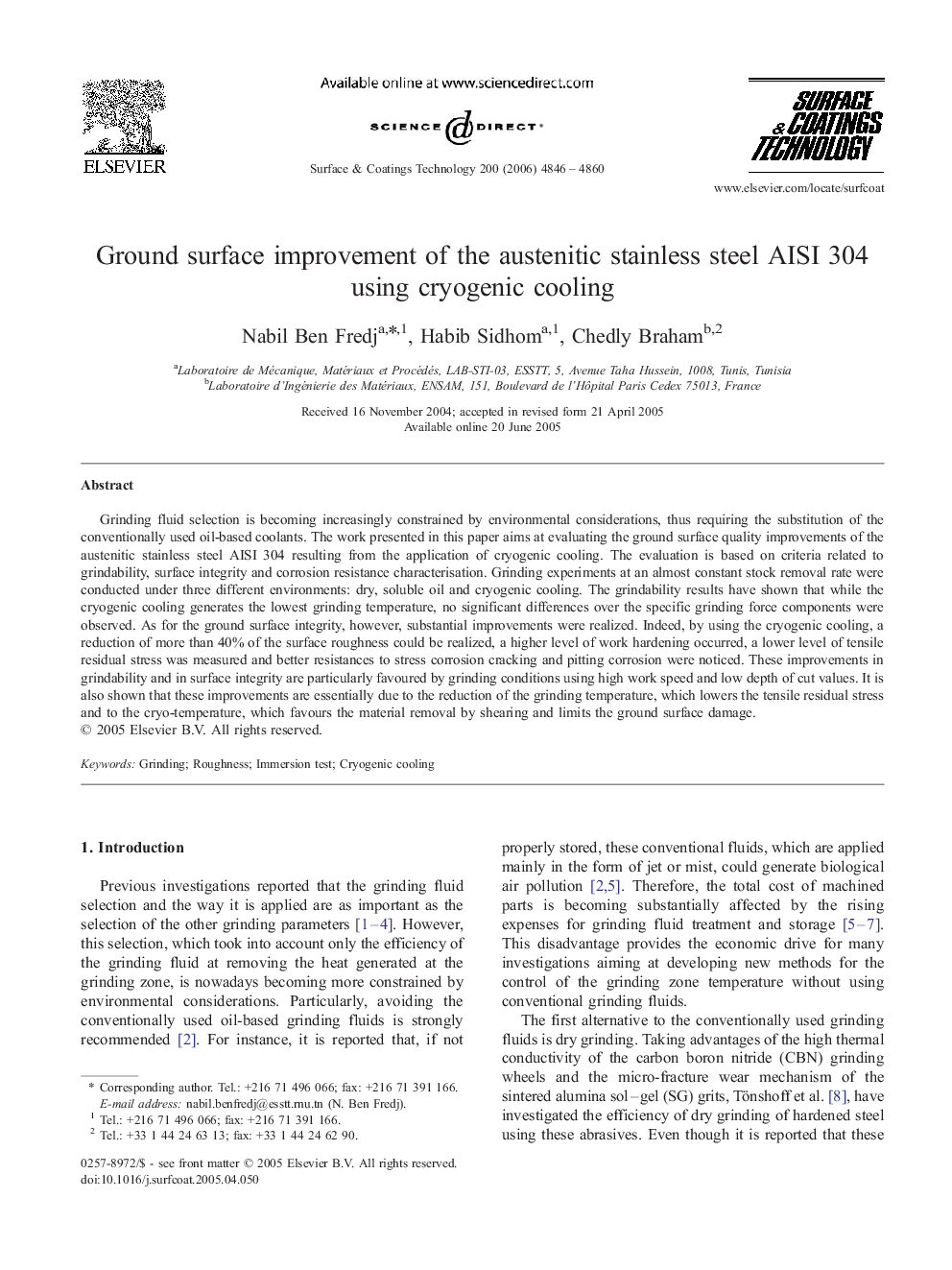| Article ID | Journal | Published Year | Pages | File Type |
|---|---|---|---|---|
| 1662496 | Surface and Coatings Technology | 2006 | 15 Pages |
Grinding fluid selection is becoming increasingly constrained by environmental considerations, thus requiring the substitution of the conventionally used oil-based coolants. The work presented in this paper aims at evaluating the ground surface quality improvements of the austenitic stainless steel AISI 304 resulting from the application of cryogenic cooling. The evaluation is based on criteria related to grindability, surface integrity and corrosion resistance characterisation. Grinding experiments at an almost constant stock removal rate were conducted under three different environments: dry, soluble oil and cryogenic cooling. The grindability results have shown that while the cryogenic cooling generates the lowest grinding temperature, no significant differences over the specific grinding force components were observed. As for the ground surface integrity, however, substantial improvements were realized. Indeed, by using the cryogenic cooling, a reduction of more than 40% of the surface roughness could be realized, a higher level of work hardening occurred, a lower level of tensile residual stress was measured and better resistances to stress corrosion cracking and pitting corrosion were noticed. These improvements in grindability and in surface integrity are particularly favoured by grinding conditions using high work speed and low depth of cut values. It is also shown that these improvements are essentially due to the reduction of the grinding temperature, which lowers the tensile residual stress and to the cryo-temperature, which favours the material removal by shearing and limits the ground surface damage.
